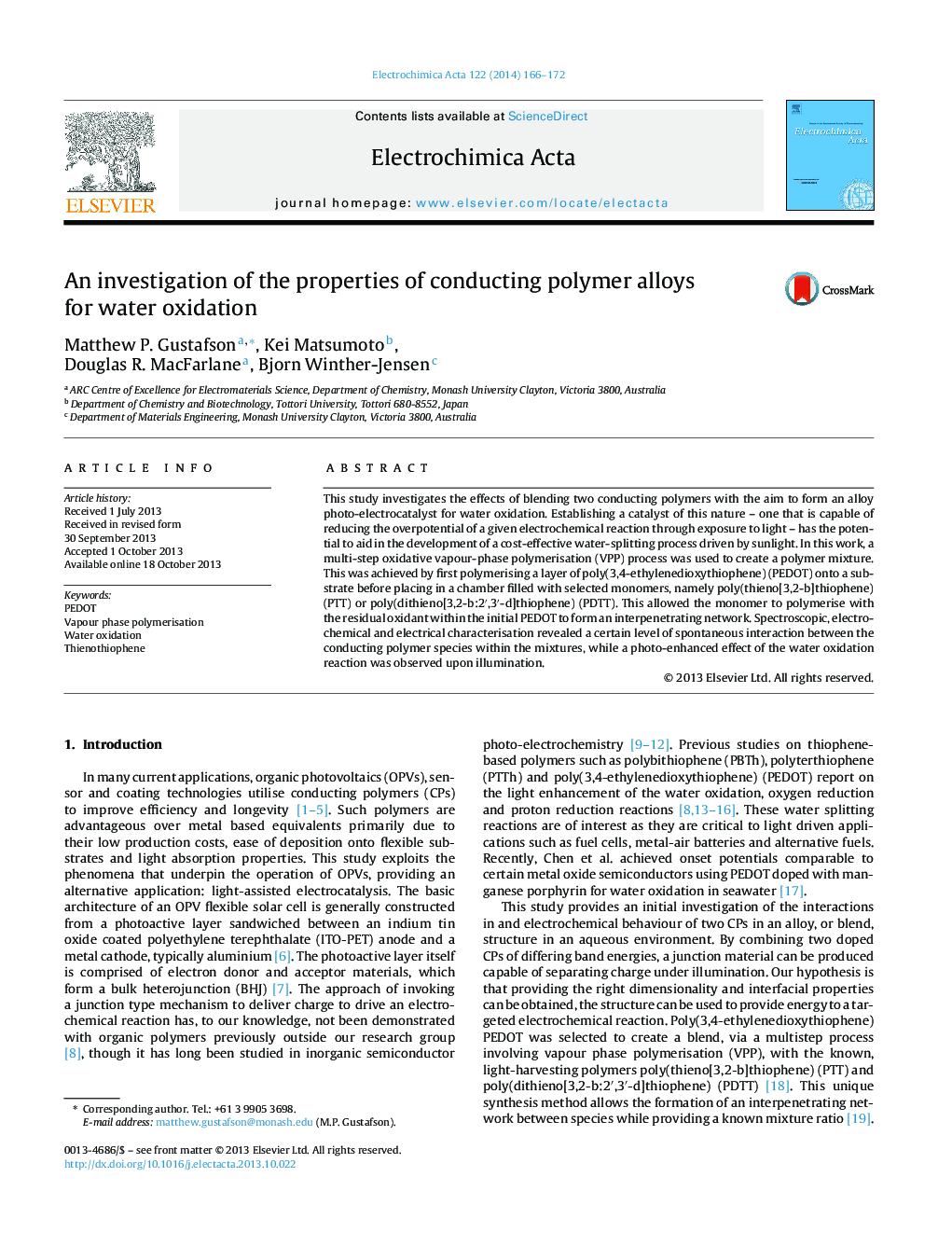| Article ID | Journal | Published Year | Pages | File Type |
|---|---|---|---|---|
| 186306 | Electrochimica Acta | 2014 | 7 Pages |
This study investigates the effects of blending two conducting polymers with the aim to form an alloy photo-electrocatalyst for water oxidation. Establishing a catalyst of this nature – one that is capable of reducing the overpotential of a given electrochemical reaction through exposure to light – has the potential to aid in the development of a cost-effective water-splitting process driven by sunlight. In this work, a multi-step oxidative vapour-phase polymerisation (VPP) process was used to create a polymer mixture. This was achieved by first polymerising a layer of poly(3,4-ethylenedioxythiophene) (PEDOT) onto a substrate before placing in a chamber filled with selected monomers, namely poly(thieno[3,2-b]thiophene) (PTT) or poly(dithieno[3,2-b:2′,3′-d]thiophene) (PDTT). This allowed the monomer to polymerise with the residual oxidant within the initial PEDOT to form an interpenetrating network. Spectroscopic, electrochemical and electrical characterisation revealed a certain level of spontaneous interaction between the conducting polymer species within the mixtures, while a photo-enhanced effect of the water oxidation reaction was observed upon illumination.
